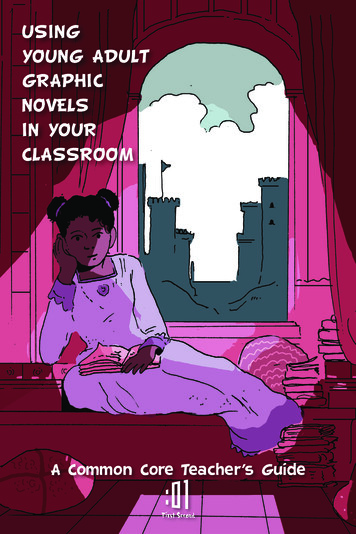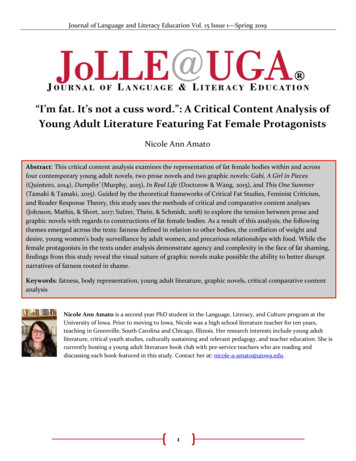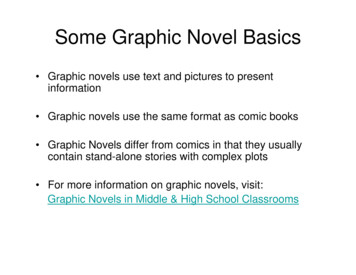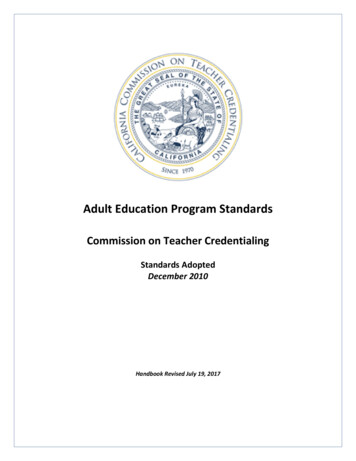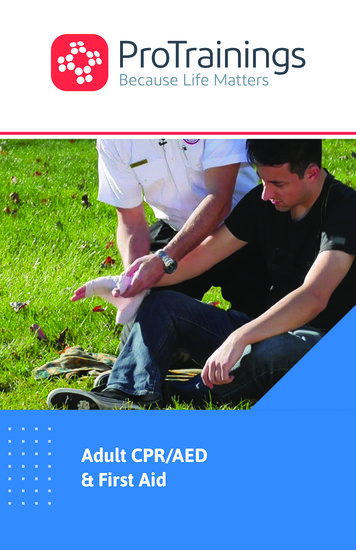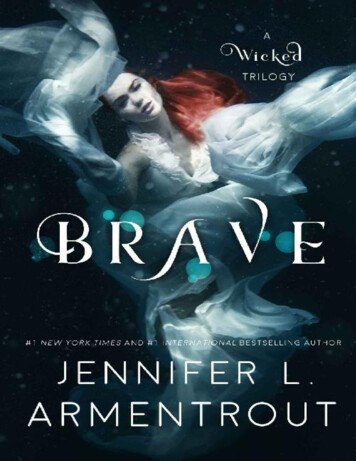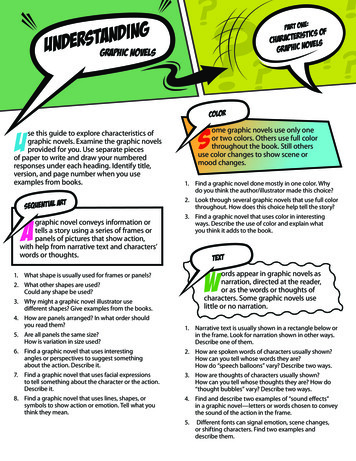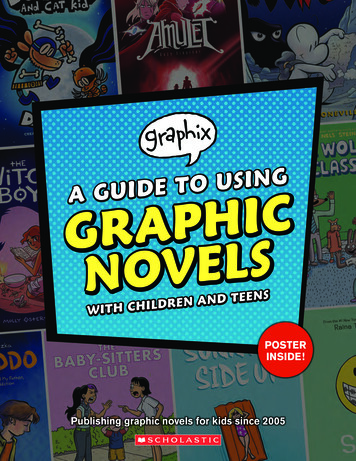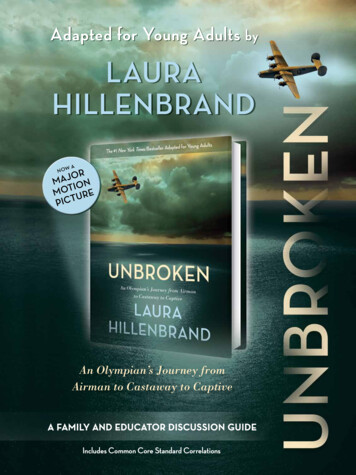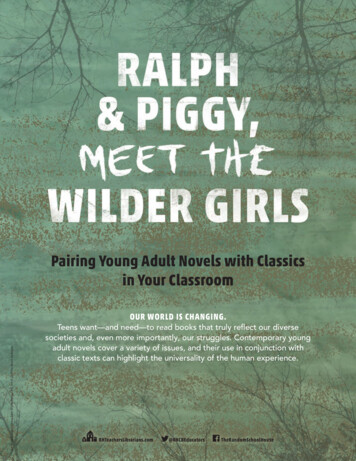
Transcription
Pairing Young Adult Novels with Classicsin Your ClassroomArt used under license from Shutterstock.com; Art 2019 by Akyut AydogduOUR WORLD IS CHANGING.Teens want—and need—to read books that truly reflect our diversesocieties and, even more importantly, our struggles. Contemporary youngadult novels cover a variety of issues, and their use in conjunction withclassic texts can highlight the universality of the human heRandomSchoolHouse
YOUNG ADULT NOVELS IN THE CLASSROOMEnglish teacher Kim Herzog onwhy young adult literature matters in the classroom:As a veteran English teacher, I have watched my students change with the world around them.Given their evolution, I have found it more and more important to find texts that mirror theirvoices and diversity. It is through young adult literature that my students find protagonists whoare reflections of themselves, both physically and metaphorically. That is not to say that I havegiven up teaching the canon in favor of more contemporary voices. Instead I have realized thenecessity of pairing classics with newer young adult titles. Through the creative integrationof these texts into my curriculum, I have seen the engagement of my students surpass myexpectations.Pairing core texts with books featuring YA voices through book clubs, literature circles, andindependent reading provides chances for contemporary voices to enter the classroomconversation, allowing for comparative analyses in writing, sketch notes, and other creativeassignments that explore thematic landscapes. Students can also apply critical lenses whilereading YA texts to see, for instance, the social and historical effects of the time in which thebooks were written on their messages. Textual comparisons can allow you and your students toexplore what it means for a book to be timeless, which books should be included in the canon,and whether these newer texts will stand the test of time. Integrating YA breathes new life intocurricula, allowing for added opportunities to engage even the most reticent learners.A FEW WAYS TO USE YOUNG ADULT NOVELSIN THE CLASSROOM!Young adult novels work well as . . .Art used under license from Shutterstock.com; Art 2019 by Akyut Aydogduwhole-classsupplemental textsliterature circlechoicesindependentreading choicesgreat bookrecommendationsIn this guide, we’ve paired Rory Power’s debut young adult novel, Wilder Girls, withWilliam Golding’s classic Lord of the Flies for an example of how to use a youngadult novel as a whole-class supplemental text; we’ve paired Wilder Girls with sixadditional titles for a literature circle example; and we’ve identified readers whowill love Wilder Girls, in addition to suggesting excellent independent readingprojects for the book!Young Adult Novels in the Classroom!We’ve suggested pairing young adult novels with classics for engaging thematicdiscussions! In addition, we’ve grouped young adult novels to enhance crosscurricular connections.2
YOUNG ADULT NOVELSAS WHOLE-CLASS SUPPLEMENTAL TEXTSWilder Girls as a supplemental text when your class is readingLord of the FliesDiscussion Questions1. Authors often write dystopian literature as a reaction to somethingin contemporary society. Look at the worlds created by Power andGolding. What are the authors reacting to? What warnings do yousee embedded in these dystopian texts? Are the warnings the same?2. What is the effect of setting on individual characters? Considerboth texts.3. On page 6 of Wilder Girls, Power reveals that “There were about ahundred girls when it started, and twenty teachers. All together wefilled both wings off the old house. These days we only need one.”At this point, the author does not explain why the group is smallernow. How does this affect the reader?4. Why do you think Power chose to have almost exclusively femalecharacters in her text? What are the effects of this choice? ConsiderGolding’s decision to include only boys on the island. How do thesegender dynamics play out in each text? What characteristics are mostemphasized in each?5. Consider the ages of the main characters in Wilder Girls and Lordof the Flies. Why does it matter that these are not adults? How do you think each story wouldchange if its protagonists were older?6. At different moments in Wilder Girls, the author chooses to narrate in short, choppy, andincomplete sentences. Why does Power structure her sentences like this? How does this affectthe reader’s understanding of the characters?7. The girls often choose not to share their thoughts and memories. What do you think they aretrying to preserve by doing this? Is this also the case with the boys in Lord of the Flies?8. Consider how the beast and the Tox are similar. Explain both in the context of literary devices.What do they reveal about society?9. The Tox affects each character differently. Does its manifestation reveal something about eachcharacter?Art used under license from Shutterstock.com; Art 2019 by Akyut Aydogdu10. Why do you think Power chose to change perspectives throughout the text? How does thatimpact your understanding of the characters?Essay Questions on Wilder Girls and Lord of the Flies1. What are the roles of nature and nurture in relation to one’s development and identity?2. What are the effects of isolation on individuals? On groups of people?3. How does fear affect and shape social norms?4. How might these novels be described as allegories? How do their messages overlap?5. How do relationships affect our actions?3
YOUNG ADULT NOVELS IN LITERATURE CIRCLESMany classrooms use literature circles to dive into themes present in multiple texts. Small groups ofstudents are able to discuss one text in-depth, while the class as a whole focuses on a particular theme.This is a great way for students to engage in critical thinking and discussion!Literature Circle Texts: The Handmaid’s Tale by Margaret Atwood, The Hunger Games by SuzanneCollins, Lord of the Flies by William Golding, The Road by Cormac McCarthy, The Bell Jar by SylviaPlath, Wilder Girls by Rory Power, The Dark Descent of Elizabeth Frankenstein by Kiersten WhiteLiterature Circles: Focus QuestionsNote: Once students meet for their first circle, encourage them to create their own questions based ontheir response to the readings and their areas of interest.1. What is the effect of defining oneself in relation to others?2. How can individuals determine whom to trust? What might cause this to change?3. How can setting, and changes within it, influence the individual?4. What do you notice about the style of writing, and how does it reveal deeper meaning in the text?5. What responsibility do we have to one another? How is the social contract perverted in each ofthese texts?YOUNG ADULT NOVELSFOR INDEPENDENT READING PROJECTSIndependent reading is a way to give students choice in what they read, and creative projects canoffer different formative and summative assessments. Recommending independent readingbooks related to a unit’s theme or genre allows students to think about connections between textsand lessons.Projects: For Wilder Girls, students can showcase their creative thinking (either independently orin groups) using the following topics for exploration: Exploring the Wilderness Within/Loyalty andBetrayal/Reliance on Others versus Self-Reliance1. (Poetry) Found Poem, Dual Narrative/Perspective Poetry, Blackout Poem2. (Art) Alternative Book Cover, Sketch Notes, Game3. (Technology) Podcast Episode, Vlog, Song4. (Research) Using contemporary media, find connections to the text. Why might the author havechosen to explore these thematic landscapes?Art used under license from Shutterstock.com; Art 2019 by Akyut AydogduYOUNG ADULT NOVELS ASYOUR GO-TO BOOK RECOMMENDATIONSStudents often look to the experts for advice on what to read next, and English teachers deliver!Wilder Girls as a book recommendation for students who . . . enjoy books about alternative realities that are not too fantastical gravitate toward dystopian texts question authority value multiple perspectives LGBTQ books4Guide prepared by Kim Herzog, English teacher at Staples High School
Publisher: Scribner Book CompanyRECOMMENDED YOUNG ADULT PAIRINGS BY THEMESfamily & relationships, morals& values in conflict, socialclass & expectationsmorality, sacrifice, survivalfamilial responsibility,fate vs. free will,love & relationshipsfreedom,gender inequality,survivalPublisher: Harper Collinsepic quests, good vs. evilcultural diversity,dying & grief,justice & equalityArt used under license from Shutterstock.com; Art 2019 by Akyut Aydogdutechnology, human & civil rights,morals & values in conflictPublisher: Little, Brown and Companycoming of age, justice & equality,racism & prejudiceacceptance & belonging,coming of age, familialresponsibility, griefpersonal growth, survival5
Publisher: Harper CollinsPublisher: Scribner Book CompanyRECOMMENDED YOUNG ADULT PAIRINGS BY THEMEScultural diversity,relationships, societalexpectationsmedia hype,nonfiction crimemorals & valuesin conflict, peer pressure,social hierarchiesPublisher: Simon & Schustercultural heritage,family & relationships,immigrationhistorical fiction,legends & folklore,reputation vs. integrityhistorical fiction,love & romance,survivalPublisher: Simon & Schustercultural diversity,suppression of truthalienation & depravity,horror & ghoststories, survivalfriendship & loyalty,morals & valuesin conflictPublisher: Macmillan Publishersfairy tales,good vs. evilPublisher: Harper CollinsArt used under license from Shutterstock.com; Art 2019 by Akyut Aydogduabuse,coming of age,perseverancebullies,heroes & heroism,loyalty6love & romance,self-esteem, morals &values in conflictabuse, relationships,self-esteem
CROSS-CURRICULAR CONNECTIONS IN YOUNG ADULT BOOKSArt, Music & TheaterHistorical Figures & Historical MomentsArt used under license from Shutterstock.com; Art 2019 by Akyut AydogduEnglish & Social Studies Classes with a Focus on Social JusticeHolocaust & Jewish Studies7
CROSS-CURRICULAR CONNECTIONS IN YOUNG ADULT BOOKSScience Fiction, Dystopia & Artificial IntelligenceShort Stories & AnthologiesEXCELLENT INDEPENDENT READING BOOKS!mental healthawareness,relationshipsabandonment,dying & grief,family &relationshipsdetermination,love & romance,responsibilitycomingof age, love &romancecoming ofage, heroes& heroism,grieffairy tales &fables, familialresponsibility,ghost storiesacceptance&belonging,home, sportsacceptance &belonging,cultural diversity,Native AmericaninterestEVEN MORE YOUNG ADULT TO COME!Don’t miss these phenomenal young adult novels, coming in fall 2019!family &relationships,love &romanceself discovery,music & theater,peer pressure,sexualitygender issues,self-discipline,sportsHolocaust &historical fiction, cultural diversity,Jewish studies,magic,justice &courageequality, povertysurvival& honorart & music,family &relationships,good vs. evilacceptance& belonging,disabilities &illnessgrowing up,racism &prejudice,self-discovery8Art used under license from Shutterstock.com; Art 2019 by Akyut Aydogdu
Teens want—and need—to read books that truly reflect our diverse societies and, even more importantly, our struggles. Contemporary young adult novels cover a variety of issues, and their use in conjunction with classic texts can highlight the universality of the human experience. P
